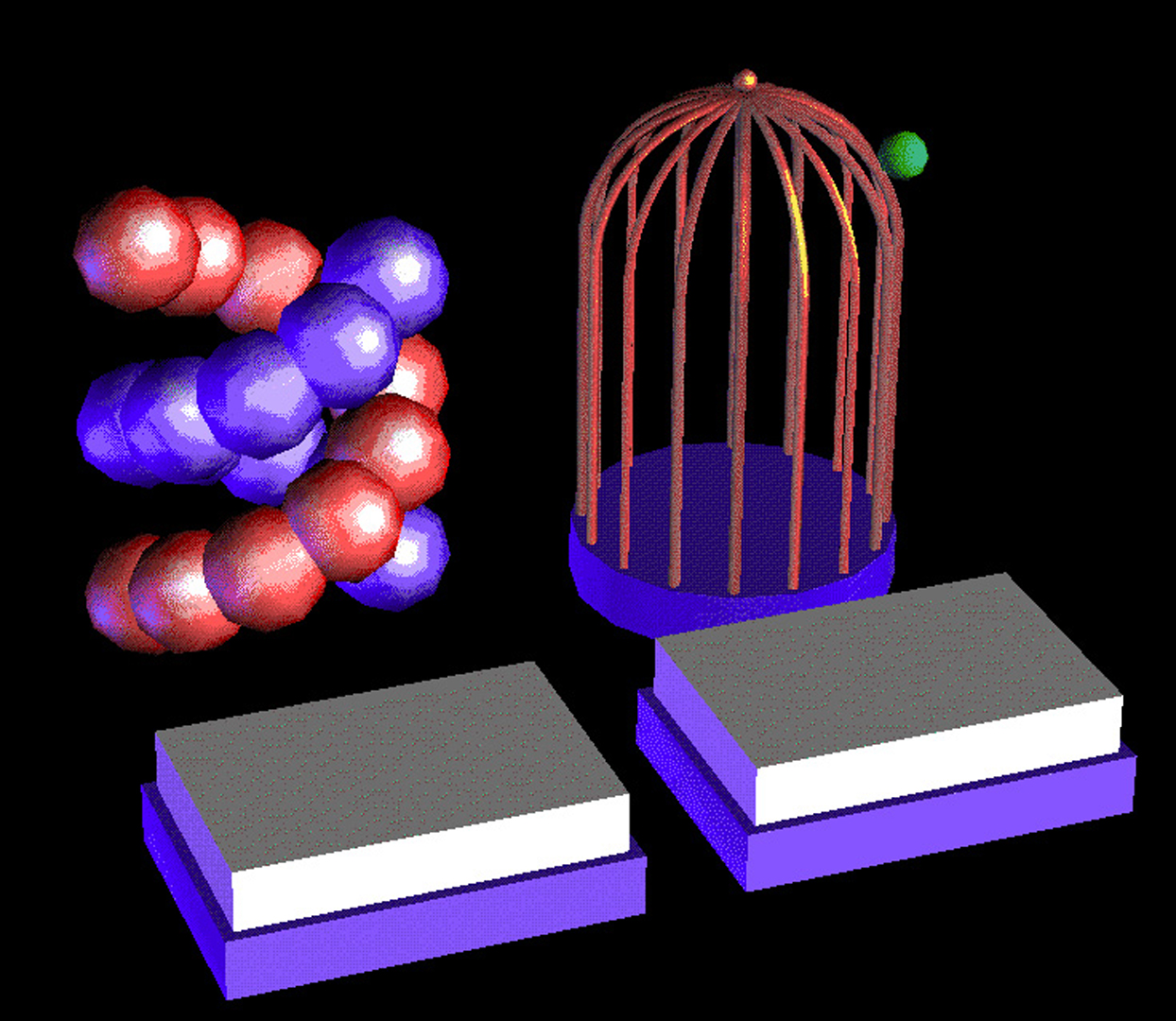“The haptic display of complex graphical environments” by Ruspini, Kolarov and Khatib
Conference:
Type(s):
Title:
- The haptic display of complex graphical environments
Presenter(s)/Author(s):
Abstract:
Force feedback coupled with visual display allows people to interact intuitively with complex virtual environments. For this synergy of haptics and graphics to flourish, however, haptic systems must be capable of modeling environments with the same richness, complexity and interactivity that can be found in existing graphic systems. To help meet this challenge, we have developed a haptic rendering system that allows for the efficient tactile display of graphical information. The system uses a common high-level framework to model contact constraints, surface shading, friction and texture. The multilevel control system also helps ensure that the haptic device will remain stable even as the limits of the renderer’s capabilities are reached.
References:
1. Avila, R. S., Sobierajski, “A Haptic Interaction Method for Volume Visualization,” Visualization “96 Proceedings, October 1996.
2. Adachi, Y., Kumano, T., Ogino K., “Intermediate Representation for Stiff Virtual Objects.” Proc. IEEE Virtual Reality Annual Intl. Symposium ’95, (March 11-15), pp. 203-210.
3. Baraff, D., “Analytical Methods for Dynamic Simulation of Nonpenetrating Rigid Bodies,” SIGGRAPH 89 Proceedings, (August 1989), pp. 223-232.
4. Blinn, J., “Simulation of Wrinkled Surfaces, ” SIGGRAPH 78 Proceedings, (August 1978), pp. 286-292.
5. Buttolo, P., Kung, D., Hannaford, B., “Manipulation in Real, Virtual and Remote Environments.” Proc. IEEE Conference on Systems, Man and Cybernetics (August 1990), pp. 177-185.
6. Craig, J., “Introduction to Robotics Mechanics and Control,” Addison- Wesley Pub. Co., 1989.
7. Finch, M., Chi, V., Taylor, R. M. II, Falvo, M., Washburn, S., Superfine, R., “Surface Modification Tools in a Virtual Environment Interface to a Scanning Probe Microscope,” Proc. 1995 Symposium on Interactive 3D Graphics, pp 13-18, April 1995.
8. Gilbert, E. G., Johnson, D.W., Keerthi, S. S., “A Fast Procedure for Computing the Distance Between Complex Objects in Three- Dimensional Space,” IEEE J. of Robotics and Automation , Vol.4, No. 2, April 1988.
9. Gill, P., Hammarling, S., Murray, W., Saunders, M., Wright, M., “User’s Guide to LLSOL,” Stanford University Technical Report SOL 86-1, (January 1986).
10. Gottschalk, S., Lin, M. C., Manocha D., “OBBTree: A Hierarchical Structure for Rapid Interference Detection,” SIGGRAPH 96 Proceedings, (August 1996), pp. 171-180.
11. Gouraud, H. “Continuous Shading of Curved Surfaces. “IEEE Transactions on Computers, C-20(6):pp 623-629, June 1971.
12. Iwata H., Noma, H., “Volume Haptization, “IEEE 1993 Symposium on Research Frontiers in Virtual Reality, pp. 16-23, October 1993.
13. Khatib, O., “A Unified Approach to Motion and Force Control of Robot Manipulators: The Operational Space Formulation,” IEEE J. of Robotics and Automation, Vol 3., No 1., 1987.
14. Latombe, Jean-Claude, “Robot Motion Planning,” Kluwer Academic Publishing, 1991, pp 58-152.
15. Lin, M., Canny, J. F., “A Fast Algorithm for Incremental Distance Calculation,” International Conference on Robotics and Automation, pp. 1008-1014, May 1991.
16. Mark, W. R., Randolph, S. C., Finch M., Van Verth,J. M., Taylor II,R. M., “Adding Force Feedback to Graphics Systems: Issues and Solutions,” SIGGRAPH ’96 Proceedings, (August 1996), pp. 447-452.
17. Massie, T.M., Salisbury, J.K., “The PHANTOM Haptic Interface: A Device for Probing Virtual Objects.” ASME Haptic Interfaces for Virtual Environment and Teleoperator Systems 1994, In Dynamic Systems and Control 1994 (Chicago, Nov. 6-11), vol. 1, pp.295-301.
18. Minsky, M. D. R., “Computational Haptics: The Sandpaper System for Synthesizing Texture for a Force-Feedback Display.” PhD thesis, MIT, June 1995.
19. Morgenbesser, H. B., “Force Shading for Haptic Shape Perception in Haptic Virtual Environments.” M.Eng. thesis, MIT, September 1995.
20. Ouh-Young, M., “Force Display in Molecular Docking, “Ph. D. Dissertation, University of North Carolina at Chapel Hill UNC- CH CS TR90-O04, February, 1990.
21. Phong, B. T., “Illumination for Computer Generated Pictures.” Communications of the ACM, 18(6), pp311-317, June 1975.
22. Quinlan, S., “Efficient Distance Computation between Non- Convex Objects,” Int. Conference on Robotics and Automation, (April 1994).
23. Ruspini, D., Kolarov, K., “Robust Haptic Display of Graphical Environments,” Proc. of The First Phantom User’s Group Workshop, September 1996
24. Salcudean, S. E., Vlaar, T. D., “On the Emulation of Stiff Walls and Static Friction with a Magnetically Levitated Input/Output Device,” ASME Haptic Interfaces for Virtual Environment and Teleoperator Systems, Dynamics Systems and Control, pp.123- 130, April 1995.
25. Salisbury, K., Brock, D., Massie, T., Swarup, N., Zilles, C., “Haptic Rendering: Programming Touch Interaction with Virtual Objects,” Proc. 1995 Symposium on Interactive 3D Graphics, pp. 123-130, April 1995.
26. Srinivasan, M. A., Beauregard, G. L., Brock, D. L., “The Impact of Visual Information of the Haptic Peception of Stiffness in Virtual Environments,” ASME Winter Annual Meeting, November 1996.
27. Zilles, C. B., Salisbury, J. K., “A Constraint-based God-object Method for Haptic Display.” ASME Haptic Interfaces for Virtual Environment and Teleoperator Systems 1994, Dynamic Systems and Control 1994 (Chicago, Illinois, Nov. 6-11), vol. 1, pp.146- 150.




